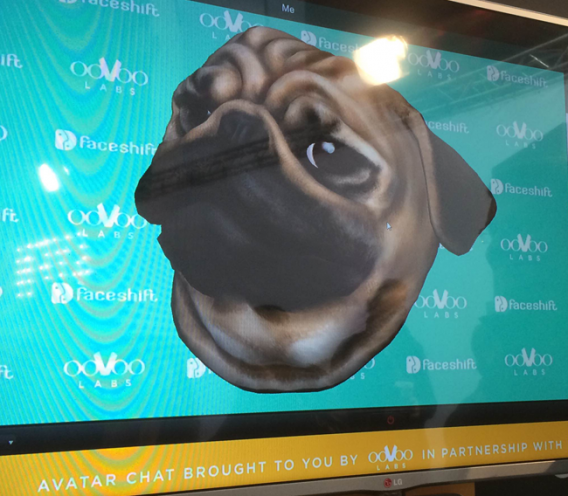At Mobile World Congress 2015 in Barcelona, we have seen messaging company Oovoo showcasing a particularly cool pixelated wall with face tracking software. As well as being a neat gimmick, this technology is being worked into Oovoo’s apps.

The face tracking technology is made to recognize your expressions. A proof of concept display mapped my expressions onto a virtual character – in my case a pug – which mimicked me. Oovoo’s Chris Wire explained that this technology is not being rolled into the Oovoo app yet, but is already a big part of a social app released at the end of last year: Flinch.

Flinch is a free game that you play against strangers or friends and the idea is simple: don’t smile! Once connected to another player, you will see them through their device camera, and whoever smiles first loses. According to Oovoo, despite it’s quiet launch, Flinch has started to become popular in the all important 13-20 age group. The app is totally free, and you can get playing right away.
This emotional face tracking, says Oovoo, could help with predictive text – or even responses. The app could read your face as happy or sad as you write, and add the appropriate smiley, for example. There is plenty of scope for mistakes with this kind of thing, but it’s undeniably funny.
What Oovoo have shown is that WhatsApp is very much behind in terms of bringing fun new communication features to its users, although this has yet to harm its huge user base.
Flinch is currently iOS only, but an Android app may be released in the future.
Download Oovoo for iOS and Android.
Related Stories
6 must have apps for Mobile World Congress 2015
What to expect at Mobile World Congress 2015
The best travel and transport apps of 2014
Follow Jonathan on Twitter: @jonathanriggall


